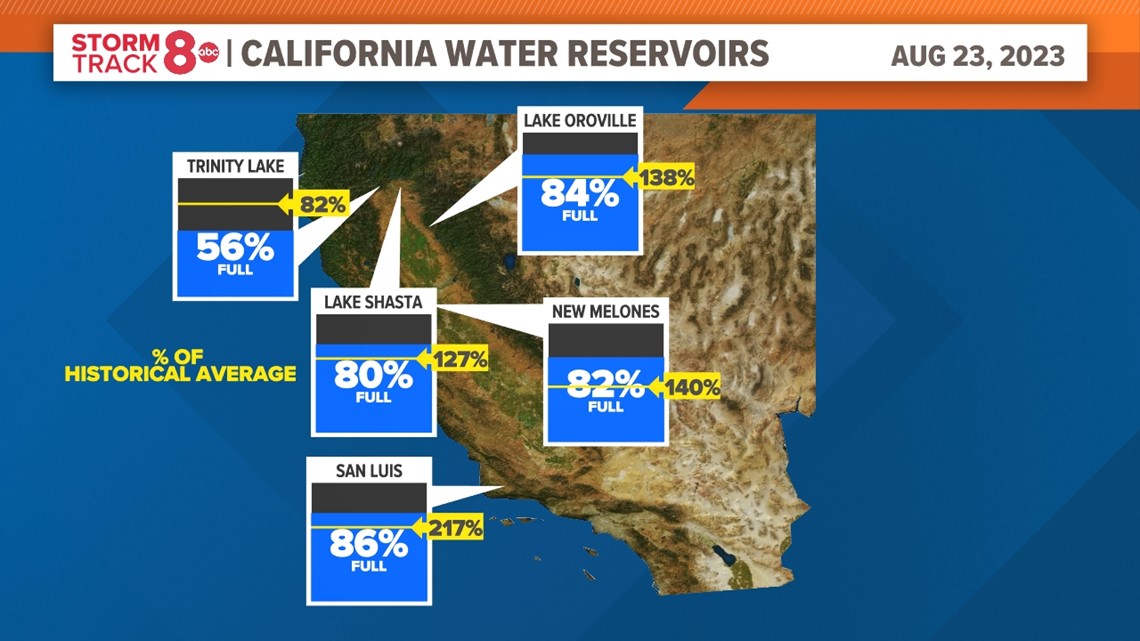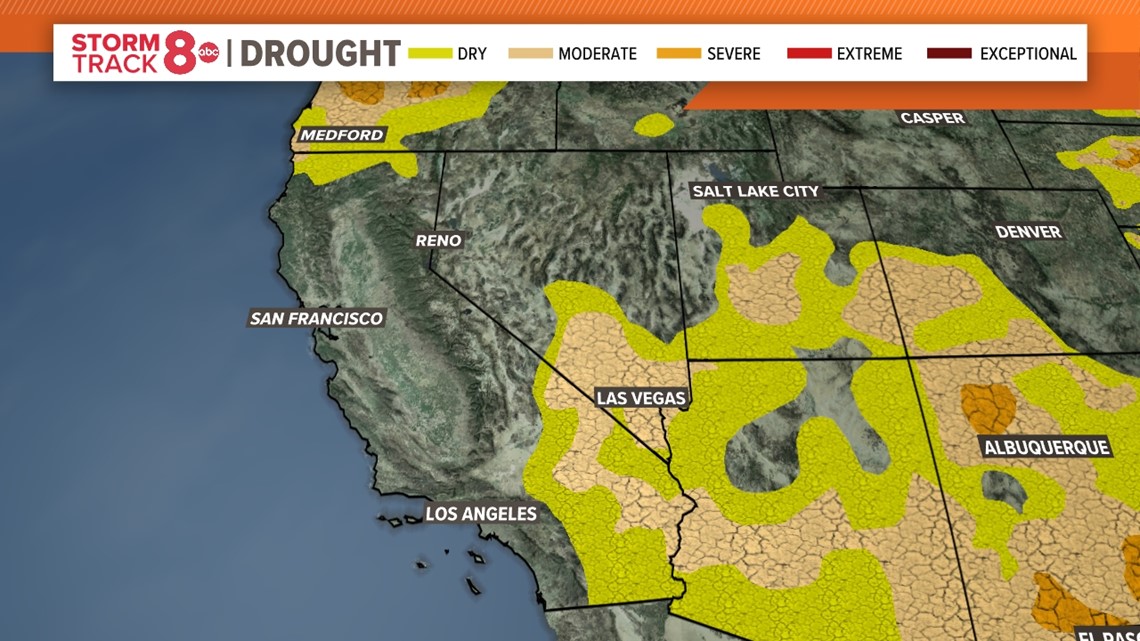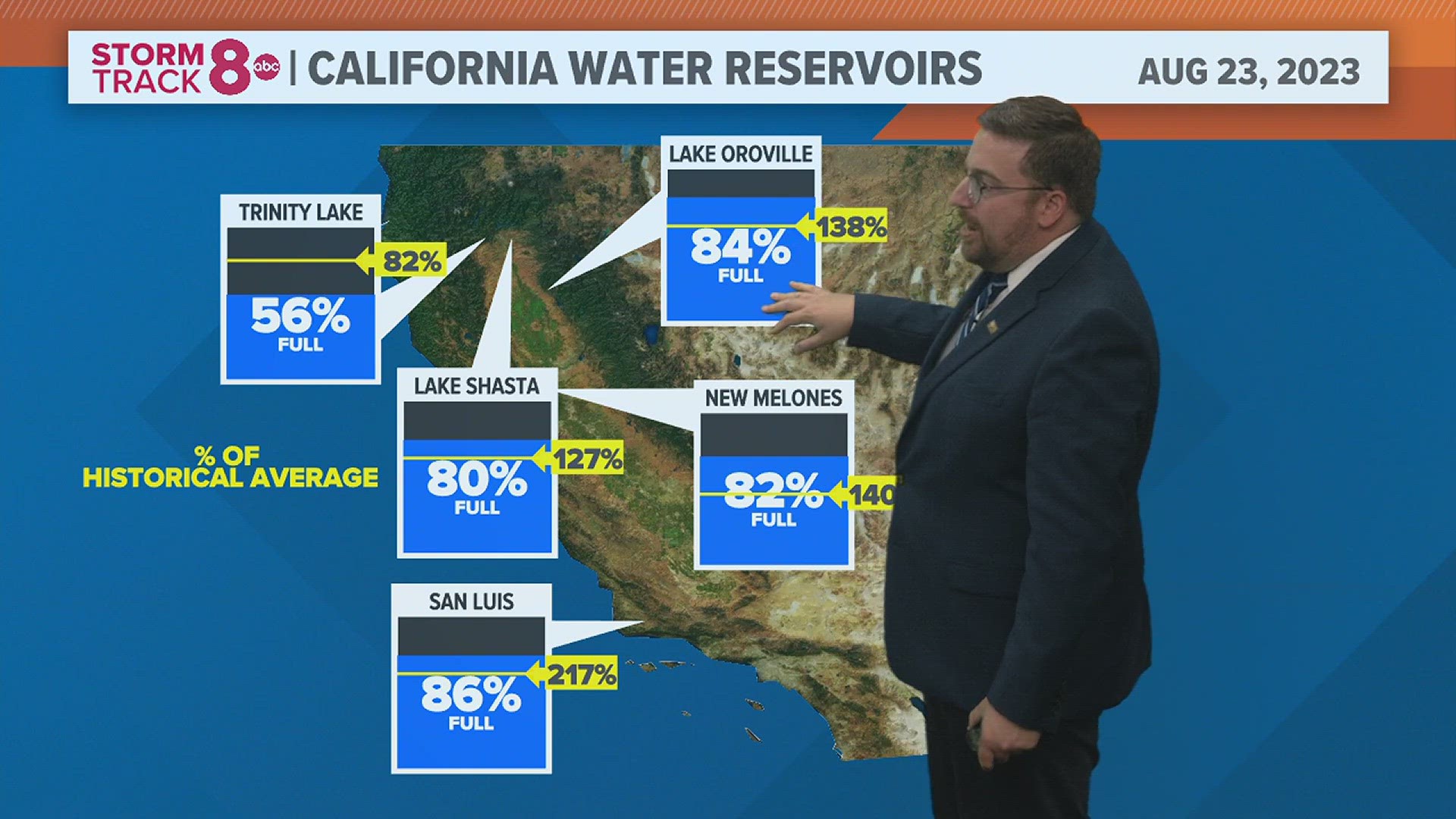MOLINE, Ill — Hurricane Hilary, then a tropical storm as it impacted California, became the first tropical storm to impact the state in 84 years. The storm brought record amounts of rain to several desert locations, some even getting a year's worth of rain in just hours.
While the storm did cause some major damage in parts of the state, it also brought beneficial rains to other places, including the Imperial Valley, an area that had pending water restrictions due to increased strain on the Colorado River, the region's main source of water.
Did Hurricane Hilary help with the California water shortage?
In the short term, one could argue that this tropical system did have some small impacts, however, the long-term situation continues to look rather concerning. Many of the largest water reservoirs are now ahead of the year-to-date average in terms of their water levels, but, the typically driest part of the season for the state is in full swing as we speak and there is still time for things to deteriorate again.


These values were achieved thanks to a record-breaking winter that featured a very large snowpack. Which is something the people living here would love to see for a few more years! While Hilary brought a ton of moisture into the region, we have to keep in mind that this storm system moved quickly, and didn't just simply sit and keep the wet weather around for days on end like the endless atmospheric river did earlier in the spring.


What's more impressive is that the intense, exceptional drought that has lasted throughout the state for years continues to improve. As of Aug. 23, 2023, no part of the state was in severe or extreme drought, only moderate drought and that area was in the southeast. The vast majority of the state is now without drought for the first time in many years! A stark contrast to even a year ago.
What does this mean for wildfire season?
Fall is usually the peak of California's wildfire season as the pattern begins to dry out and Santa Ana winds begin to increase. While this dampness in the summer will certainly help curtail some of that threat this year, there is the potential that the moisture could spark new, widespread vegetation growth that could eventually dry back out again with another round of drought. Something that will certainly need to be tracked in the coming months!
Have a question you would like me to answer for an upcoming Ask Andrew segment? Submit it, here.

